What are some ways to clean the air in space stations…
… with house plants that NASA commissioned a study for two years?
During my research on how to keep a healthy home…
I stumbled upon this information…
How cool is it that there are plants in space?
The NASA study found that some house plants clean the air…
… not only by absorbing carbon dioxide and releasing oxygen…
… but also by removing significant amounts of VOCs (volatile organic compounds)…
… and other chemicals.
Hear it from Troy!
Knowing about the NASA research makes me curious on the truth of this science…
From that on, I started to collect houseplants around my house…
… primarily to prove the science on my own!
Couple of my first houseplants was put in my bedroom…
Since this is where I spend most of my time in…
Surprisingly, this trick works! Well how about that, right…
Now, every time I enter my room…
There’s always this breeze and freshness that’s surrounding me…
Wasn’t that cool?
There are many indoor plants to choose from…
… that are effective in purifying the home…
… and we’ll talk about some of the chemicals they remove.
According to NASA, you should use 15-18 house plants (in containers of 6-8 inches)…
… in a home of 1800 square feet.
Chemicals These Houseplants Clean From Air
NASA spent two years testing house plants to determine…
… how well they remove formaldehyde, benzene, and trichloroethylene.
The indoor plant study of Dr. B.C. Wolverton…
… investigated ammonia, xylene, and toluene, so we’ll discuss both.
Formaldehyde

From building materials to household products…
Formaldehyde (in small amounts) can be found anywhere in the home…
A short list of where it can be found includes insulation, glues and adhesives…
… pressed wood products like particleboard (a material used in a lot of furniture…
… decorative plywood paneling, wrinkle removers, gas stoves and fire retardants).
As extremes, formaldehyde provides cancerous results…
… while moderate exposure may lead to allergic reactions.
In either case, formaldehyde shouldn’t be introduced into the environment.
Benzene
Benzene can be inhaled by humans, with cigarette smoke being a major offender…
… as well as petroleum products containing benzene.
A WHO study shows that homes with attached garages…
… have higher levels of benzene than homes with detached garages.
There are also other sources of benzene, such as smog (especially near industries)…
… building materials like paint and glue, paint stripper, detergents, rubber, and inks.
As a well-known irritant, benzene is also a cancer-causing substance when chronically exposed…
In addition to these health problems, benzene also causes other problems…
Trichloroethylene
In addition to being used in building materials and industrial solvents for removing grease…
… trichloroethylene is also used to remove rust.
It’s also found in water, unfortunately…
In addition to rug cleaners and grease removers…
… trichloroethylene is found in typewriter correction fluid, adhesives and paint removers.
When chronically exposed, trichloroethylene damages the central nervous system…
… causing fatigue, blurred vision, cancer, and birth defects.
Xylene and Toulene
It is possible to be exposed to xylene and toulene by inhaling, swallowing, or touching them…
You can find fingernail polish in glues, adhesives, lacquers, paints…
… paint thinners, wood stains, rubbers and plastic cements.
A number of organs, including the gastrointestinal tract, kidneys…
… nervous system, and immune system, are affected by xylene and toulene.
Ammonia
As a result of ammonia-based cleaners, most of us are familiar with the smell of ammonia…
Ammonia is produced by a variety of sources, including household cleaners…
… animal feces, fertilizers, wood fires, and fuel.
Ammonia levels below a certain level in the home aren’t problematic…
… but elevated levels can result in headaches and nausea.
The airborne ammonia in the air is especially irritating…
… for people with allergies and asthma.
Without further ado…
10 House Plants That Help Purify Air
The next step is to discuss which house plants can help…
… remove these nasty chemicals and clean the air.
Interestingly, some of these plants might be toxic if eaten by cats or dogs (or even children)…
… so be sure to research further if you have pets.
Snake Plant
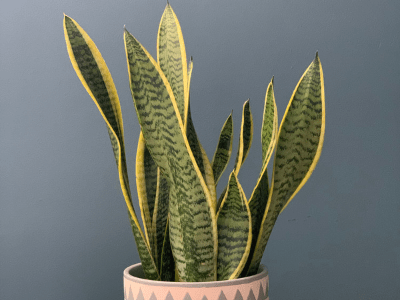
Snake plant or mother-in-law’s tongue is a very popular house plant…
… that can be used outdoors in areas without direct sunshine.
A native of West Africa, it is noted for its upright leaves and architecturally appealing forms…
As a result, it has become a popular choice for modern homes…
… and I can vouch for how low-maintenance it is…
… since I personally have it in several rooms in my house.
Snake plants are very effective to clean the air against formaldehyde…
… benzene, trichloroethylene, xylene, and toluene.
Peace Lily
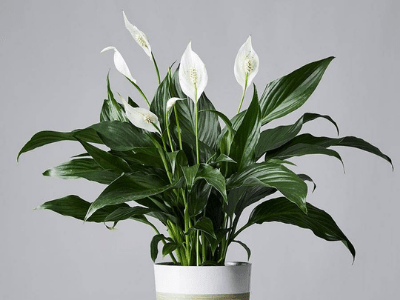
All of the offending chemicals listed above…
… are cleaned out of the air by peace lily plants.
It has the additional benefit of eliminating acetone…
… which is released from electronics and some cleaners.
A shaded environment and frequent watering are required for peace lilies…
Make sure the leaves are also kept dust-free…
Boston Fern

A moderate Southern California climate and indirect light make Boston ferns happy…
There are plenty of them around, they’re cheap and they can withstand a little neglect…
Boston ferns are some of the most efficient filters of formaldehyde…
Boston fern ranked the highest out of all plants tested in its ability to clean the air, especially removing formaldehyde from the air.
Dr. Wolverton an Environmental Engineer from Picayune, Washington, and a Research Scientist for NASA for over 20 years
… but they also remove a small amount of xylene and toluene.
Gerbera Daisy

It’s three cheers for color! You can cheer up your home…
… with beautiful Gerbera daisies, but they also do you some good.
In addition to incorporating oxygen into the nighttime air…
… Gerbera daisies are rare plants, which makes them a good bedside plant.
Immediately after drying out the dirt in the pot, they need sun and water…
Benzene, formaldehyde and trichloroethylene…
… are not present in the air when gerbera daisies bloom.
Red-Edged Dracaena
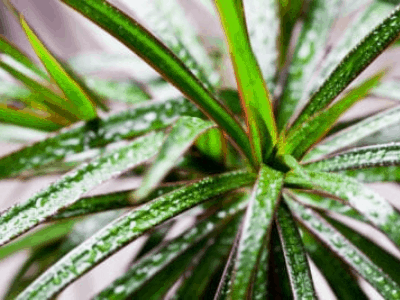
An indoor arrangement can be popped up with a splash of color…
… thanks to the red edges of the leaves.
It is important to remember, however, that these can grow very tall…
… so increase the pot size appropriately.
The plants are also beautiful in the shade outdoors…
… I have been growing them for quite some time.
Among other contaminants, the red-edged dracaena clean the air by filtering…
… formaldehyde, benzene, trichloroethylene, xylene, and toluene.
Pot Mum
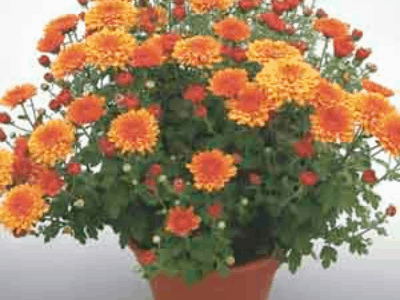
The chrysanthemums like the sun…
… and water once the soil is dry one inch or so from the top.
It is inexpensive to purchase chrysanthemums even at a grocery store…
… and they not only have excellent feng shui properties…
… but also clean the air of all the chemicals listed above, especially benzene.
Aloe

While aloe was not included in the NASA study…
… aloe is very effective in filtering formaldehyde.
So it makes a perfect kitchen window plant because it loves sunlight…
You can also use the sap of the leaves…
… to heal burns and wounds from accidents – they have dual purposes!
Lady Palm
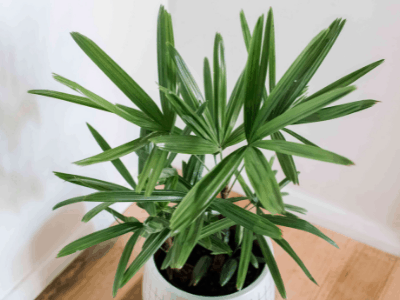
It is best to place these gorgeous palm trees inside the house…
… in direct sunlight so their finger-like leaves can remain green.
Roots should not be soaked…
Formaldehyde, Xylene, and Toluene are easily removed from lady palms…
… but they are also extremely effective at removing ammonia.
Golden Pothos
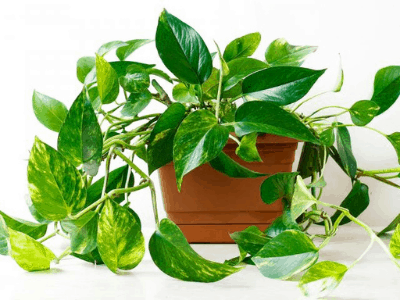
A golden pothos vine is a fast-growing vine that grows well…
… in hanging pots and anywhere it can be allowed to cascade or climb.
The golden pothos plant has the ability to remove carbon monoxide…
… and benzene from the air, so consider placing it near the garage.
Xylene, toulene, trichloroethylene, and formaldehyde are also targeted by the plant…
Philodendrons
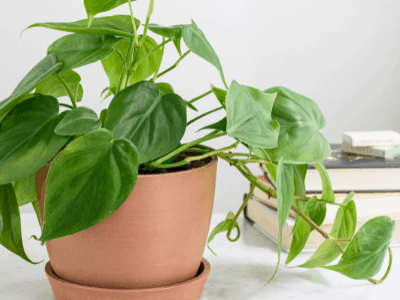
Philodrendrons are specifically known for removing formaldehyde from the air…
It makes for stunning indoor and outdoor container gardens with its large, decorative leaves…
To sum it up…
Houseplants in general offer you the greatest possible benefits…
One of it being to clean the air in your house…
… while also providing you with oxygen!
It has even been approved by NASA!
There are a lot of houseplants that may help you out with this…
The 10 plants listed above are also very easy to maintain…
… making them the best things to have!
Conclusion
Hopefully, you’re now convinced of how houseplants have the ability…
… to clean the air indoors and also beautify your house.
Check out more posts like this on our website, such as this one here!
If you have anything to ask me…
… don’t hesitate to contact me!
Have an amazing gardening journey!


